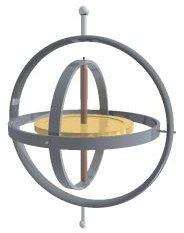What are Gimbals? What is a Gimbal Bearing?
Gimbals and Gimbal Bearings
Gimbals as we know them today have been around since the 15th century when they were being used to prevent the movement of the early compasses on ships. Nowadays they have a multitude of applications; in photography for keeping the camera still while filming and making movies where movement is simulated by the use of gimbal mounts.
Marine applications are one of the more popular uses of gimbals and gimbal bearings. In maritime use, they are used to support of the delicate gyro-compass and to dampen the movement of deck-mounted machinery that is also susceptible to the movement of the ship due to sea conditions.
This is an article in Mechanical Engineering about gimbals and gimbal bearings. Here we will examine the role of these components both in engineering and everyday applications. We begin with an overview of gimbals and gimbal bearings.
Introduction to Gimbals and Gimbal Bearings
Gimbals and gimbal bearings have many applications. Their first use is usually credited to the Greek philosopher Philo of Byzantium. In 200 BC, he invented an inkpot with numerous openings for the pen. However, because of the use of a series of concentric rings, no ink was spilled, no matter which way it was turned.
Towards the end of the first century, the Chinese were using gimbals for holding incense pots horizontal as they were rotated about their high priests, and also as personal body warmers, preventing the burning wood from spilling onto the users clothing.
As the years passed, new applications were found and in the early modern period of the 15th century, the dry compasses (forerunners of our gyro compass) were being suspended by gimbals as shown below.

Modern uses include NASA space craft engine mounts that position the engines for maximum thrust, expansion joints that allow for the expansion and contraction of steam/hot liquid pipelines, and bearings for marine boat drive shaft alignment.
Gimbals, Bearings, Bellows and Universal Expansion Joints
Gimbals
Basically a gimbal consists of at least two rings attached to each other axially at 90°, with the component to be protected against movement suspended between the rings.
Some applications of gimbals follow:
- Ships Gyro Compasses
This was one of the more common uses for gimbals, confirming the ships position in all weather conditions. However, nowadays the modern electronic aids such as Global Navigation Satellite Systems are used for navigation.
A sketch of a simple gimbal used to mount a gyro compass is shown below, along with an image of an early gimbal as used on a Naval Vessel.
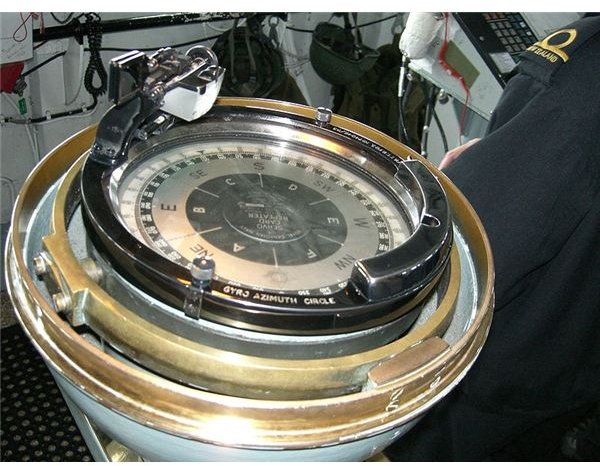
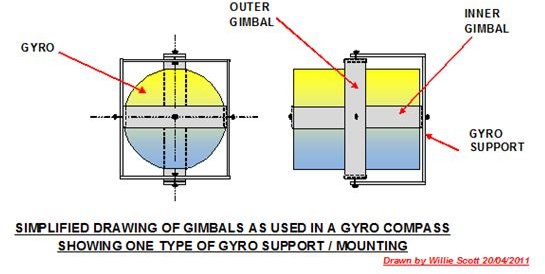
- Ships Chronometers
Ship’s Deck Officers are required to be able to navigate the vessel, and calculate their position through Celestial Navigation or Astronavigation. This involves the use of a sextant to measure the distance between two celestial bodies; usually the sun and one of many known navigation stars, and the horizon.
This type of navigation has been used over the centuries and is still part of their Officer of the Watch Certification.
Obtaining this information involves the use of an accurate chronometer, and this is supported by gimbals to ensure its accuracy.
When I was at sea the chronometer was kept in a dry room amidships, well away from the wet deck. It was the duty of the Chief Officer or Navigating Officer to wind up the chronometer just before noon every day, reporting this to the Captain and recording it in the ship’s log.
An image of a chronometer and sextant are shown below.
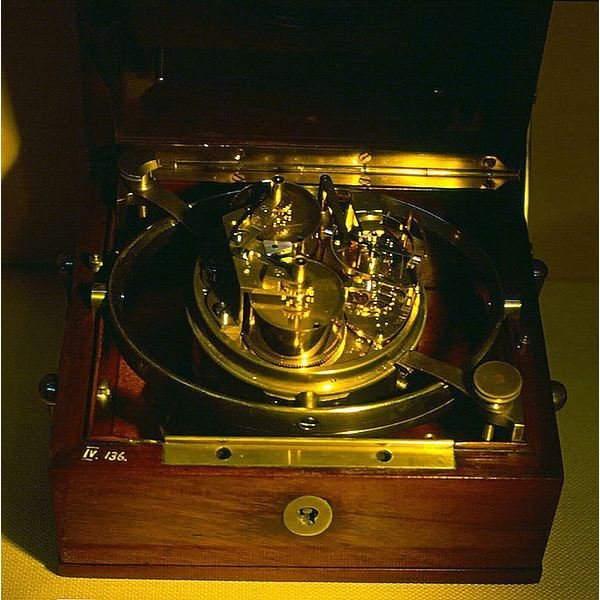
Gimbal Bearings
Gimbal bearings are specialty ball bearings/races. One of their main marine uses is in boat engine drive shafts where the bearings maintain alignment using gimbal technology.
A gimbal bearing and a driveshaft arrangement is shown below.
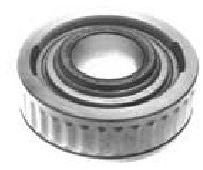
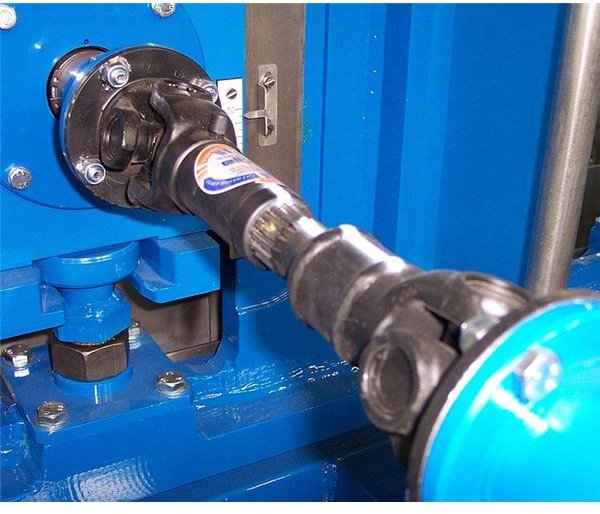
Images from https://www.sterndrivesaustralia.com.au/gimbalrepairkits.html
Gimbal Bellows
Gimbal bellows are used as a shroud to protect the gimbal bearings from ingress of water. The bellows are flexible, being held to the shaft using jubilee clips, with the bellows rotating along with the shaft.
An Image from https://www.sterndrivesaustralia.com.au/gimbalrepairkits.html is shown below;

- Universal Expanding Gimbal Joint
The gimbal expansion joint allows for the expansion and contraction of steam and hot liquid piping runs.
The expansion joint operates on the gimbal principle by a system of fixed and sliding gimbaled links, compensating for angular, lateral, and axial movement. This prevents any undue stresses on the flanges of the components being connected to piping, such as gas/steam turbines, or main engine exhaust manifolds/turbo-blowers.
A sketch showing my interpretation of a typical universal gimbal expansion joint is shown below;
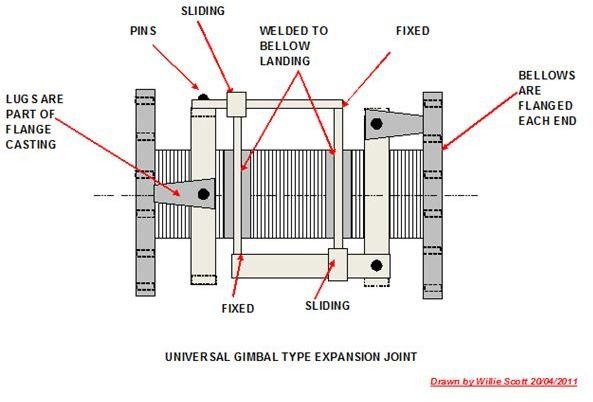
- NASA Gimbals
Spacecraft engines have to be supported in the direction of thrust through the different orientation caused by pitch, roll, and yawing of the craft from take-off to orbiting.
This is achieved by the fitting gimbals to the engines as shown below;

An image of Beta Gimbal Assembly used to orientate PV panel arrays on the International Space Station is shown below.
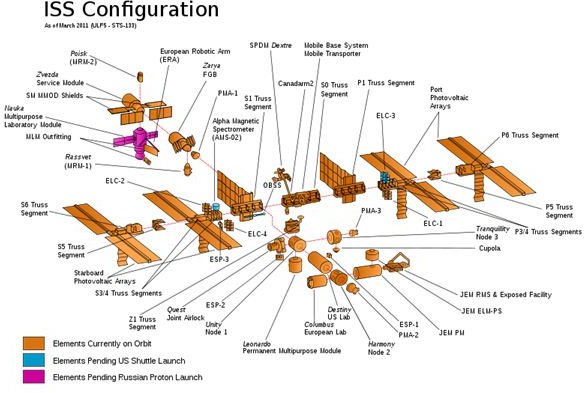
Note:
I should also note that gimbal bearings have been used in ships and offshore rigs for a few decades.
I was Project Engineer at Kellogg, Brown and Root Offshore Construction Yard here in the Highlands of Scotland for many years. The last rig I worked on was at the time the largest jack-up gas rig. We fitted three self-contained power generation modules to the main deck, these being about the size of a large steel container. Inside was a Rolls Royce RB211 gas turbine driving the generator.
The module was fixed to the deck using three gimbal bearings spaced out in the shape of the peaks of a triangle, being bolted to the module and the deck main girders. (We used stainless steel shims to level it).
I asked the RR technicians who were onsite to commission the module, about the purpose of the gimbals. They replied that the RB211 was quite a fragile turbine requiring stabilizing during load out and when the deck was being raised and lowered.
Webs visited
1. tiffen: use of gimbal bearings in video cameras.
2. ferrettigroup: Anti-rolling gyros.
3. anticz: Gimbal lock explained.
4. sterndrivesaustralia: Gimbal bearings and bellows
5. hyspan: Gimbal expansion joints
